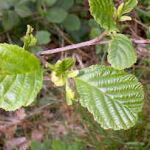

According to Hartwell (1967–1971), the leaves are decocted in folk remedies for cancer of the breast, duodenum, esophagus, face, pylorus, pancreas, rectum, throat, tongue, and uterus. The bark and/or roots are used for cancers and inflammatory tumors of the throat. Reported to be alterative, astringent, detersive, diuretic, sudorific, tonic, and vermifuge, black alder is a folk remedy for cancer, fever, foot ailments, tumors, and worms (Duke and Wain, 1981). The bark decoction is taken as a gargle for angina and pharyngitis, as an enema in hematachezia. |
|
Internal use: one-quarter cup of tea in the morning and one quarter cup of tea in the evening. Fresh bark should be prepared the same way to induce vomiting. |
|
The Cherokee Herbal by J.T.Garret Copyright © 2003 by J.T. Garret pp 56, 113, 205 Tom Brown's Guide to Wild Edible and Medicinal Plants by Tom Brown Jr. Copyright © 1985 by Tom Brown, Jr. pp 60-63 Welcome to NewCROP™ the New Crop Resource Online Program Copyright © 2004 Perdue Univerity |